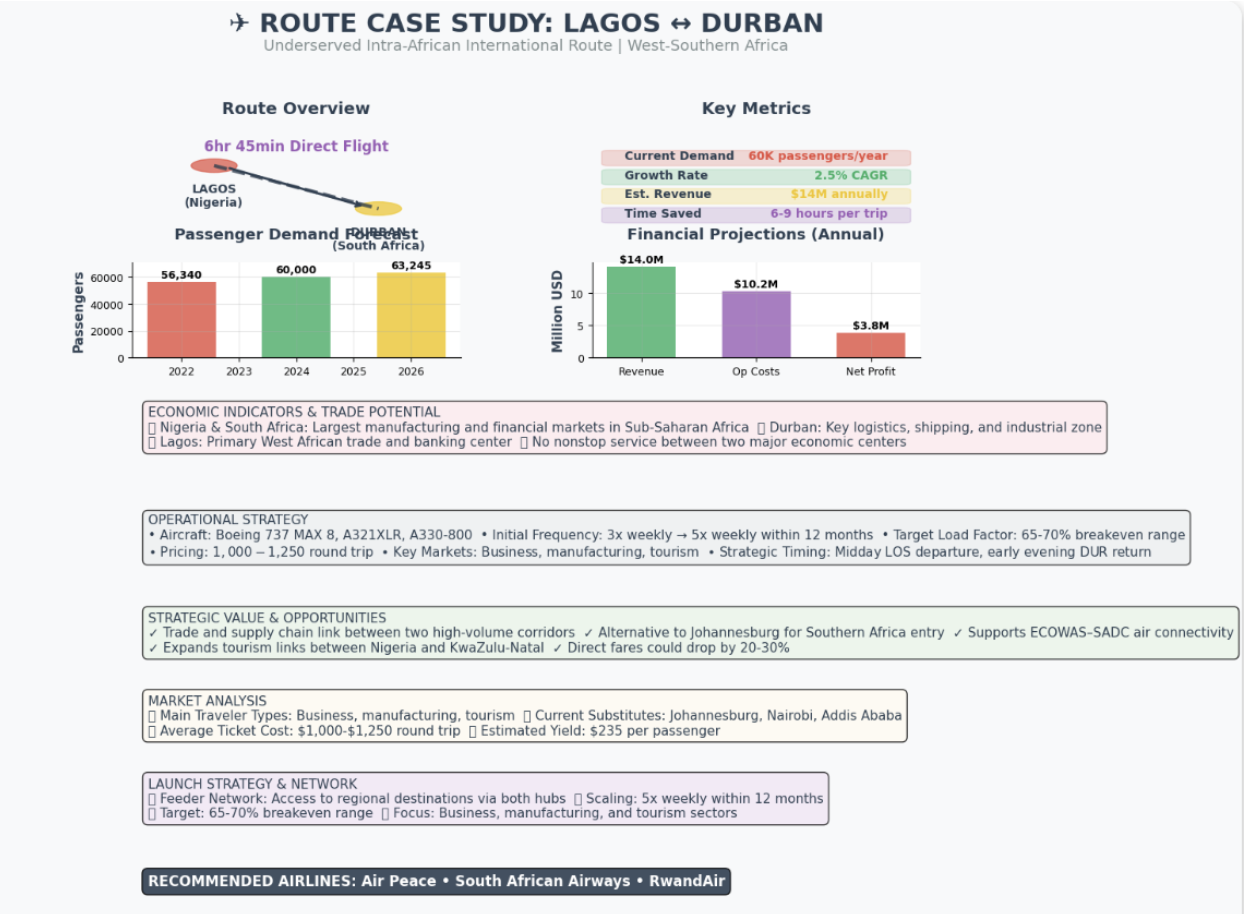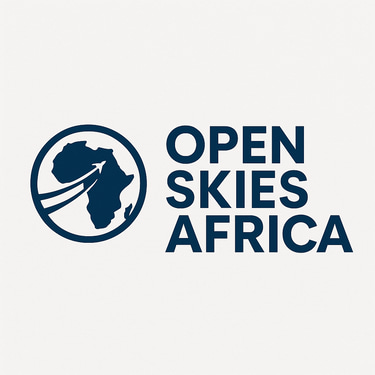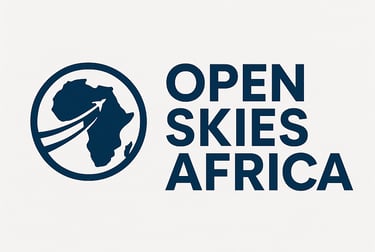
Lagos (Nigeria) ↔ Durban (South Africa)
Bamako (Mali) ↔ Nairobi (Kenya)
Route Status: Underserved
Route Type: Intra-African international
Region: West–Southern Africa
1. Demand & Passenger Traffic
Current demand (2024): ~60,000 passengers/year
Past demand (2022): ~56,340 passengers
Forecast demand (2026): ~63,245 passengers
Annual growth rate: ~2.5% CAGR
Main traveler types: Business, manufacturing, tourism
Top O&D substitute cities: Johannesburg, Nairobi, Addis Ababa
Total travel time saved with direct flight: 6–9 hours per trip
Average ticket cost (2024): $1,000–$1,250 round trip
2. Revenue Projections
Estimated average yield: ~$235 per passenger
Estimated annual route revenue: ~$14 million
Potential net revenue after ops costs: ~$3.4–4.2 million
Pricing advantage: Direct fares could drop by 20–30%
Seat load target: 65–70% breakeven range
3. Economic Justification
Nigeria and South Africa: Largest manufacturing and financial markets in Sub-Saharan Africa
Durban: Key logistics, shipping, and industrial zone
Lagos: Primary West African trade and banking center
No nonstop service between two major economic centers
4. Aircraft & Operational Details
Aircraft types: Boeing 737 MAX 8, A321XLR, A330-800
Flight time (direct): ~6hr 45min
Range: Meets sector requirements
Runway length: Both airports suitable for narrow-body and medium widebody aircraft
5. Proposed Launch Strategy
Initial frequency: 3x weekly
Scaling target: 5x weekly within 12 months
Ideal timing: Midday departure from Lagos, early evening return from Durban
Feeder network: Access to regional destinations via both hubs
6. Strategic Value
Trade and supply chain link between two high-volume corridors
Alternative to Johannesburg for Southern Africa entry
Supports ECOWAS–SADC air connectivity
Expands tourism links between Nigeria and KwaZulu-Natal
7. Recommended Airlines
Air Peace
South African Airways
RwandAir




